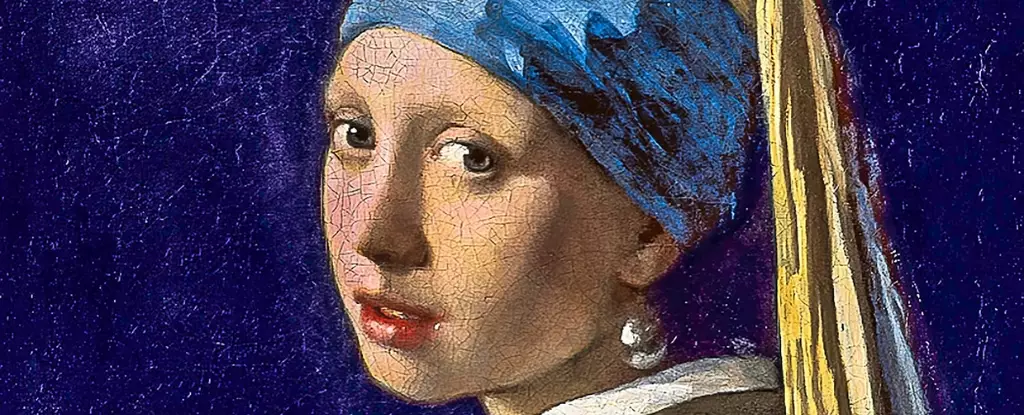Johannes Vermeer’s “Girl With a Pearl Earring” stands as a hallmark of artistic brilliance and cultural intrigue. Housed in the Mauritshuis museum in The Hague, this 17th-century painting has transcended time to captivate audiences worldwide. Recent scientific investigations have sought to decipher the enigma behind its widespread appeal, unveiling groundbreaking neurological insights about viewer interaction with art.
Neuroscientific Investigations: The Sustained Attentional Loop
A team of neuroscientists, commissioned by the Mauritshuis, embarked on an exploration of the brain’s reaction to various artworks, focusing specifically on Vermeer’s iconic girl. Using sophisticated brain imaging techniques, such as EEG and MRI, they identified a unique neurological phenomenon termed “Sustained Attentional Loop.” This phenomenon describes how the eye naturally dances between key focal points of the painting: the girl’s eye, her mouth, and the pearl earring itself. Martin de Munnik, representing the research firm Neurensics, articulated that this cyclical flow of attention compels viewers to engage with the piece longer than others. The painting effectively orchestrates a visual rhythm that both entraps and enchants, ensuring that the viewer’s gaze remains transfixed.
The Brain’s Intimate Connection with Art
The research highlighted that observing the “Girl With a Pearl Earring” stimulates the precuneus region of the brain, which is intimately tied to consciousness and personal identity. This heightened activity denotes a deeper connection between the viewer and the artwork. De Munnik remarked on the paradoxical nature of beauty, suggesting that the sustained gaze fosters a profound appreciation. This relationship illustrates why some artworks, such as Vermeer’s masterpiece, eclipse others in societal memory. There exists an innate human quality that responds to beauty and familiarity, effectively drawing viewers into a shared emotional experience anchored in the painting’s intricate details.
One striking aspect of the study was the emotional disparity in viewer responses to original paintings compared to reproductions. When subjects viewed Vermeer’s genuine work, their emotional reactions were recorded to be tenfold stronger than responses elicited by replicas. This finding underscores the significance of engaging with original art. Mauritshuis Director Martine Gosselink emphasized that authentic experiences with art—whether through visual mediums or performing arts—are crucial for cognitive development and personal enrichment. This assertion aligns with growing recognition in art education and cultural preservation: art has the potential to stimulate the brain profoundly.
What sets “Girl With a Pearl Earring” apart from Vermeer’s other creations is not solely its subject but also the artist’s technique. Unlike many of Vermeer’s works that depict individuals engaged in tasks, this painting features a subject that directly engages the gaze of the viewer, creating an intimate connection. Gosselink highlighted that while Vermeer often drew focus to singular points, “Girl With a Pearl Earring” possesses multiple focal areas, synergistically amplifying viewer engagement. The combination of the girl’s expression and the reflective pearl creates a compelling allure that captures the mind and heart alike.
Future Research Directions: Expanding the Artistic Horizon
The intriguing results of this study have opened the door for further exploration into how other renowned artworks, such as Da Vinci’s “Mona Lisa,” engage audiences on a neurological level. De Munnik expressed interest in extending this research, positing that comparative studies may yield insights into differing artistic techniques and their impact on viewer psychology. Such investigations could unravel not only the emotional layers of iconic artworks but also fortify our understanding of the psychological interplay between art, the observer, and the cultural narratives surrounding them.
As we unravel the layers of emotion and cognition associated with Vermeer’s “Girl With a Pearl Earring,” it becomes evident that art is not a passive experience but an active engagement that shapes our perceptions and emotional landscapes. This charming masterpiece continues to resonate across generations, not only as a great work of art but also as a unique lens through which we can glimpse human consciousness and connection. In a world constantly shifting, both artistically and scientifically, the painting invites viewers to step into a dialogue that transcends mere aesthetics—prompting personal reflection and collective appreciation for the intricate nature of art and the human experience.


Leave a Reply